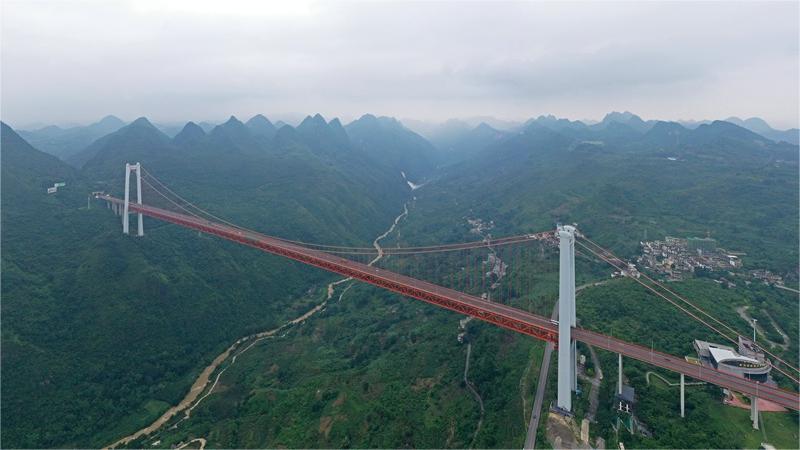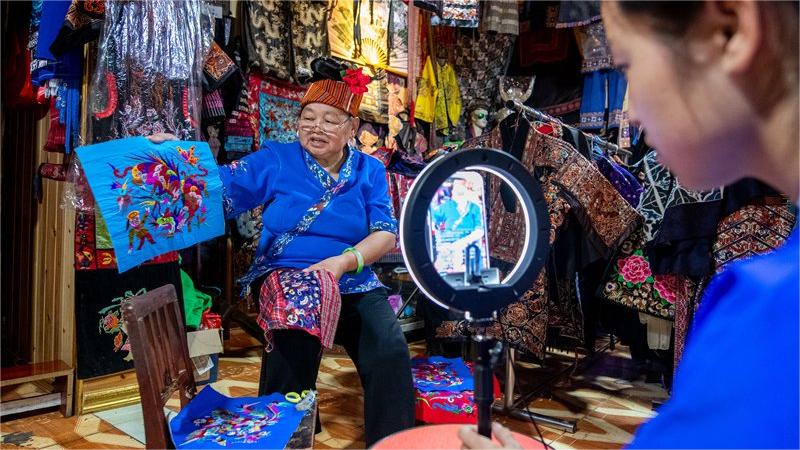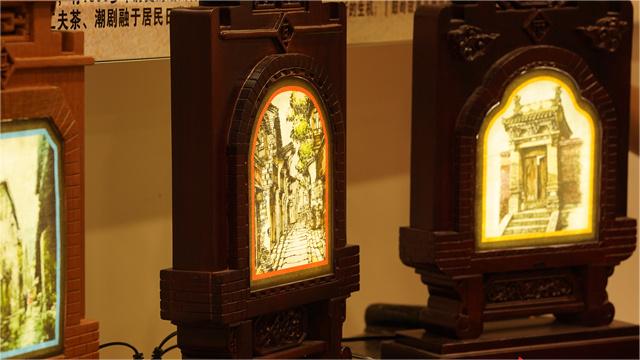Xi Jinping and Tajikistan: "Good brothers walk hand in hand"
BEIJING/DUSHANBE, July 3 (Xinhua) -- "I am filled with joy and expectations to visit the home of a good neighbor and good brother during this crisp fall season," Chinese President Xi Jinping said in his signed article published in Tajik media ahead of his first state visit to the country in 2014.
In this midsummer, Xi's third state visit to Tajikistan will surely write a new chapter for the friendship of the two countries.
ROBE AND ORDER
During his 2014 state visit, Xi was invited to Tajik President Emomali Rahmon's residence for a family feast. To welcome his distinguished guest, Rahmon rolled out a silk carpet at the entrance of his presidential mansion -- a Tajik etiquette of the highest honor reserved for esteemed guests.
Rahmon, accompanied by his family in their traditional attire, greeted Xi and his wife, Peng Liyuan.
The two leaders walked and talked inside the courtyard, where the trees were lush and the fruits fragrant. Rahmon picked one fruit from a tree and handed it to Xi.
Inside the room, Rahmon personally dressed Xi in a chapan -- a traditional Tajik robe -- and tied a belt around his waist.
"I have seen Dushanbe full of vitality and rapid development, and I have felt the simplicity, friendliness and hospitality of the Tajik people," Xi told Rahmon.
When Xi revisited Dushanbe in June 2019, he received the Order of the Crown from Rahmon. In the Tajik language, the word "Taj" means "crown."
During the ceremony, Rahmon draped the sash over Xi's shoulder and placed his nation's highest decoration on him. Noting that the Order of the Crown embodies the profound friendship the people of Tajikistan have kept with the people of China, Xi said he highly valued the decoration.
Since China and Tajikistan established diplomatic ties, bilateral relations have made significant progress, evolving from strategic partners to a comprehensive strategic partnership. Today, the two sides are jointly building a China-Tajikistan community with a shared future featuring everlasting friendship, solidarity and mutual benefit.
"The friendship between the leaders has led to positive development in bilateral relations," Qanoatullo Saifulloev, deputy director of the state-run Khovar News Agency, told Xinhua in an interview.
LANDMARKS OF COOPERATION
In downtown Dushanbe, two striking white buildings stand tall along Rudaki Avenue. The new government and parliament halls are nearing completion. They are considered landmarks of practical cooperation between China and Tajikistan.
The two sides decided on the project during Rahmon's visit to China in 2017. When Xi visited Tajikistan two years later, Xi and Rahmon attended a ceremony to unveil the construction models of the China-assisted office buildings. The two presidents were also briefed on the design plans and details of the projects.
These edifices are characterized by a blend of classical European architecture, Islamic culture and modern designs.
Yusuf Rakhmatbekzoda, deputy director of the construction project, said the completion of the two buildings will not only provide the government with a comfortable and modern office environment but also significantly improve the capital's urban landscape. "These unique structures will serve as symbols of China-Tajikistan friendship," Rakhmatbekzoda said.
In 2014, the two countries signed a memorandum to build the Silk Road Economic Belt, making Tajikistan the first country to do so under the Belt and Road Initiative (BRI), Xi's signature proposal.
China's BRI partnership with Tajikistan has resulted in several vital projects with mutual benefits.
Take the Dushanbe No.2 power plant, a bilateral flagship Belt and Road cooperation program, for example. During the 2014 visit, the two presidents attended a ceremony marking the completion of the first phase of the project and the groundbreaking of the second phase.
Since the plant's completion by the end of 2016, more than 700,000 local citizens in Dushanbe have no longer worried about power shortages throughout the year, especially during the cold winter months.
The BRI has in recent years also given a boost to trade between the two countries. Last year, two-way trade reached 3.9 billion U.S. dollars, a 53.5 percent year-on-year increase.
"Tajikistan welcomes and supports this very wise initiative, which responds to the needs of Tajikistan," Rahmon once said in an interview.
TWO PRESIDENTS' BOOKS
People-to-people exchanges between the Chinese and the Tajiks enjoy a long history. Through the ancient Silk Road, the forebears of the two nations exchanged goods and ideas and learned a great deal from each other.
Xuan Zang, an eminent 7th century monk, and Chen Cheng, a Chinese diplomat in the Ming Dynasty, traveled to Central Asia as Chinese envoys of friendship, Xi wrote in a signed article published in Tajik media prior to his 2019 visit to the country. "The life stories of your historical and literary figures, such as Emir Ismail Samani and the famous poet Rudaki, are widely known in China."
"The wise pursue kindness and peace; only the fool is bent on strife and war," Xi once quoted Rudaki's poem when addressing the fifth Summit of the Conference on Interaction and Confidence-Building Measures in Asia.
The publication of the two presidents' works in each other's countries has also promoted the exchange of ideas.
In 2019, the Tajik edition of the first volume of Xi Jinping: The Governance of China was released. Rahmon said the book could "help the Tajik people better understand China, President Xi's philosophy of governing the country and China's development path."
Also, in that year, the Chinese version of Rahmon's book -- The Tajiks in the Mirror of History -- was published in China. Xi mentioned the book in his signed article and said the book gives "the Chinese people new insights into Tajikistan."
The Chinese leader has long advocated for exchanges and mutual learning among various cultures. In his eyes, mutual learning transcends clashes, and coexistence transcends feelings of superiority. He also called on building the BRI into "a road connecting different civilizations."
Under the BRI framework, programs such as the Confucius Institutes, Luban Workshops and the China-Tajikistan Center for Traditional Medicine have bolstered cultural encounters between the two peoples.
When biding farewell to Xi at the airport after the Chinese leader wrapped up his visit to Tajikistan in 2014, Rahmon said one of the key outcomes of the visit was that he and Xi became even closer brothers. "Good brothers walk hand in hand," he said.
Photos
Related Stories
- Heartfelt welcome reflects robust ties
- Xi Story: CPC's commitment to improving conduct
- President Xi's Silk Road stories: A new era begins in Kazakhstan
- Feature: Greeted by household Chinese song, Xi starts Kazakhstan trip to build on unique partnership
- Interview: Xi's visit highlights China's commitment to regional cooperation, SCO unity, says Kazakh scholar
Copyright © 2024 People's Daily Online. All Rights Reserved.









